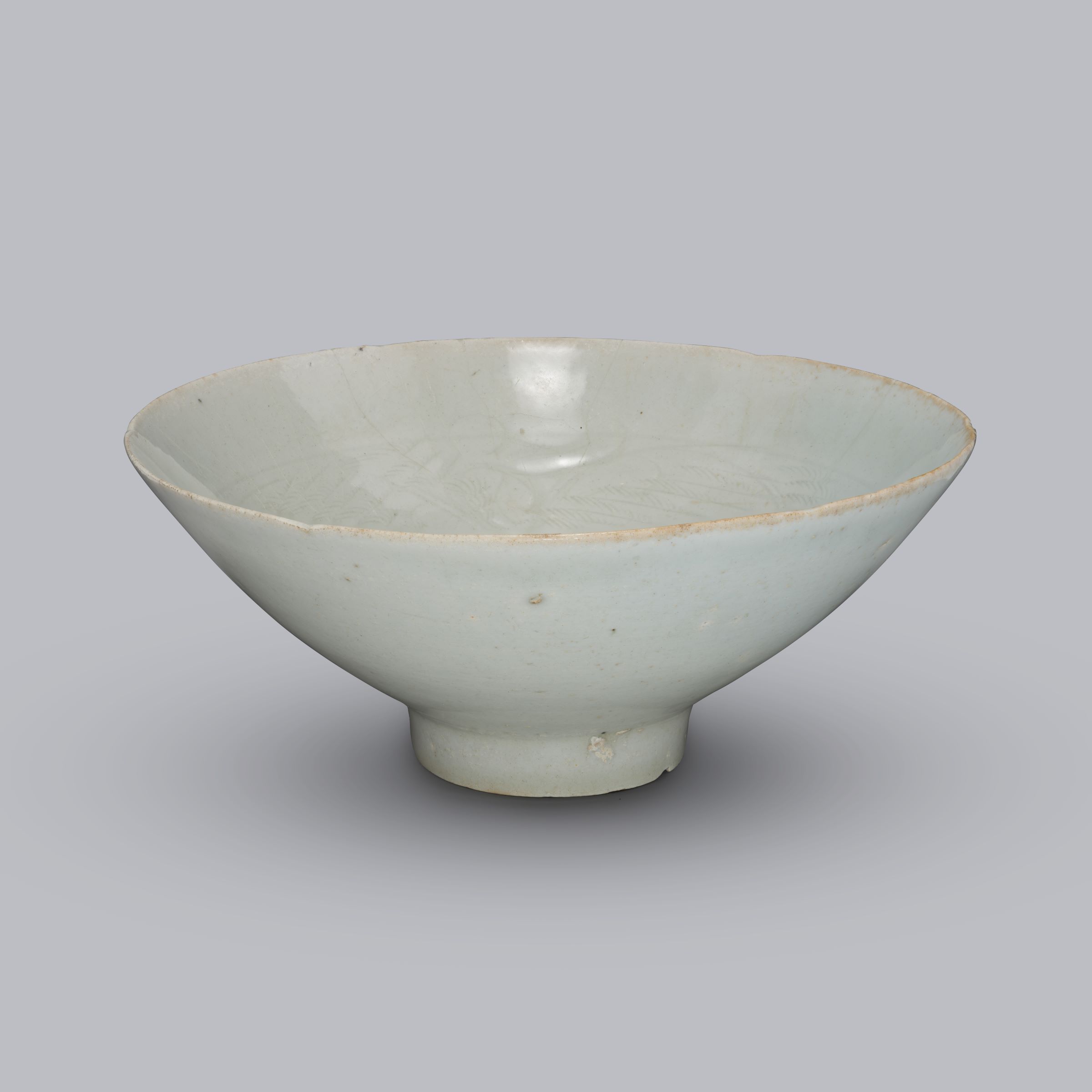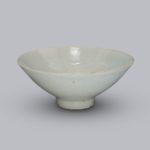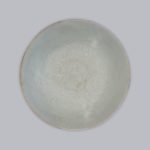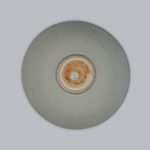
Bowl [Ch211]
Qingbai Ware, Jiangxi Province; Southern Song Dynasty, 12th-13th century
Porcelain with incised decoration under a pale blue glaze (D. 17.2 cm)
Qingbai wares were made in Jiangxi province in south-eastern China in the Song (960-1279) and Yuan (1279-1368) dynasties, with many kilns in the city of Jingdezhen. Qingbai ware has a white porcelain body covered with a bluish-green glaze. It was admired for its thinness and its resemblance to jade. Jiang Qi (early 13th century) writes that Jingdezhen porcelain is ‘pure white without flaws, so when it is sold elsewhere, it is always known as Jade of the Rao prefecture.’ Marco Polo (1254-1324) described ‘a city named Jingdezhen where they make the most beautiful cups in the world; they are of porcelain, and are manufactured in no other part of the earth besides that city.’
The earliest examples of Qingbai ware are usually plain and undecorated, but by the 12th century carved designs had become common. This example has a flowing pattern of flower heads and tendrils. A comb has been used to create abstract leaf forms.
In the Song dynasty, Qingbai ware had a lower status than wares such as Ding, Ru and Guan, which were frequently used at court. It nonetheless enjoyed great commercial success and the best examples are works of exceptional craftsmanship. In the 14th century, Qingbai porcelain became the basis for the blue and white wares developed at Jingdezhen. It is therefore the direct ancestor of the celebrated imperial porcelains of the Ming dynasty (1368-1644).
Provenance: Brigadier B.C. Lake (1913-1996); Bluett & Sons, London, c. 1960; Accepted in lieu of Inheritance tax by HM Government from the estate of Anthony du Boulay in 2024 and allocated to the Winchester College Treasury Museum.
Location: Treasury, Gallery 2


